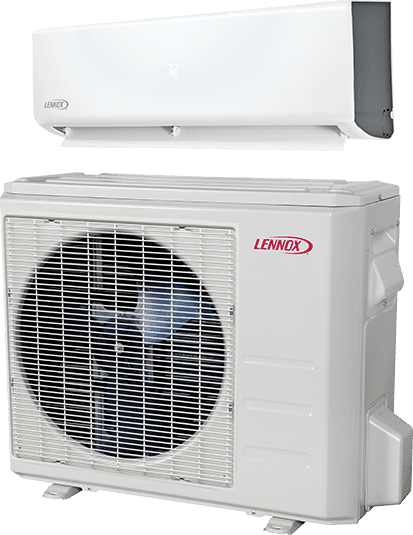With increased concern on air pollution and the quality of indoor air, nothing seems more important than being able to maintain a healthy environment in your home. However, it is difficult to do so without putting the proper air conditioning systems in place. Without them, the temperatures may make your summers and winters unbearable.
While central air conditioning systems come in handy during these times. Not every building has ductwork. Small apartments and home additions without ductwork need different heating and cooling solutions. This is where ductless mini-split systems come into place.
Ductless mini-split systems have come a long way. Originally, they were only meant as cooling appliances, but over time, they have grown to become more versatile.
What Is a Ductless Mini-Split System?
Ductless mini-split systems are also known as ductless heat pumps or ductless air conditioners. Due to the way heat pumps generate cool air, these units can perform both operations. This system achieves the same function as a central air conditioning system, with a slight difference.
A ductless mini-split system has two main units, the handling unit, which is installed indoors, and the condenser, which is installed outdoors. Together, the two units work to circulate and keep the air in your house healthy and breathable. These units are wall-mounted, which means that they don’t need ducts to circulate. However, they can only heat or cool one room per machine.
Why a Ductless Mini-Split System?
Ductless mini-split systems are highly efficient. Initially, the efficiency of these systems would raise eyebrows, but the units we see today are compact, energy-saving, affordable, and highly efficient. They allow you to save on upfront and utility costs, especially when compared with other systems such as your central AC.
Unlike the central AC system, which may require some back-up units if one expands their house, a ductless mini-split system is convenient enough to handle all the air conditioning needs. All it takes is proper zoning, and all your heating or cooling needs are dealt with.
Ductless mini-split systems are quite flexible. You can have multiple indoor units connected to a single condenser on the outside. These multiple units can be installed in different rooms and controlled independently to meet specific heating or cooling requirements.
Components of Ductless Mini-Split Systems
Evaporator
A ductless mini-split system has what is called an evaporator coil, which gathers the heat from the surrounding air and expels it into the refrigerant. The evaporator is arranged in coils of copper tubing and is found in the handling unit installed indoors. The air pulled from the indoors constantly passes through these coils, and the thermal heat is absorbed by the refrigerant in a cold gaseous state.
After the heat is extracted from your indoor air and the environment remains sufficiently cool, it is recirculated back into the room. The fans in the handling unit drive the warm air out to cool your home. When the warm air absorbed comes into contact with the evaporator coils, moisture begins accumulating, and dry air is given out. Once the heat from the air is absorbed by the refrigerant, it is transferred to the outdoor unit through copper tubing.
Condenser
The condenser is found in the outdoor unit. It functions the same way as an evaporator coil but in reverse. Instead of absorbing heat from the air, the condenser coil releases the heat absorbed by the refrigerant to the air outside. When thermal heat is absorbed from the indoor air, the refrigerant is subjected to a high pressure that converts it to hot gas. It is then circulated through the condenser coils, and a fan blows cool air over them, resulting in a cooled-down refrigerant that is in turn converted to liquid form.
Compressor
The compressor, which is found on the outdoor unit, is used to elevate the mini-split system’s refrigerant temperature and pressure by compressing it. This happens as the refrigerant leaves the evaporator coil. The need for the increase of the refrigerant pressure serves to create a pressure difference that allows the gas to flow from a region of high pressure to a region of low pressure. When the compressor increases the pressure, the gas travels to the low-pressure region in the handling unit.
It also follows that when the pressure is increased, the temperature of that gaseous refrigerant also increases. As is the case with pressure, temperature also flows from high to low. When the temperature of the refrigerant is higher than the air in the outdoor unit, the refrigerant will transfer heat toward the outdoor unit, resulting in an ambient environment indoors.
Expansion Valve
Before reaching the evaporator coils in the indoor unit, the refrigerant must be cooled down into a low-pressure liquid state. This happens in the expansion valve. It swiftly expands the liquid while reducing both its temperature and pressure.
Refrigerant
The refrigerant is a heat transfer medium used by mini-split pumps to keep your home well-conditioned. It basically circulates the heat pump to absorb, distribute, and release heat. It extracts heat from the indoors and expels it outside, and when it is cold, it pushes heat back into the room.
Usually, refrigerants are denoted by the letter “R,” followed by some special numbers built from the chemical structure of the type of refrigerant. The common ones used in the industry include R-22 and R-410A. The latter is more popular today than ever because it works at a higher temperature than R-22. It also permits impressive SEER ratings for an HVAC system, as compared to those that utilize the R-22 refrigerant.
How the Components of the Ductless Mini-Split System Work Together
Now that you have the general idea of how a ductless mini-split system works and how each of the components contributes to your home’s air conditioning needs, here is how they simultaneously work.
The refrigerant is moved by the ductless mini-split system through its various components, as highlighted above. During summer, the refrigerant absorbs heat from indoors and dispenses it out in the yards.
It passes through the expansion valve, where it converts the liquid refrigerant – previously converted – back into a gas. Through expansion, the refrigerant is cooled down and then passed through the evaporator coils, where a fan blows ambient air over them. Cool air is then introduced into the room, and in the process, the refrigerant absorbs thermal heat, and it warms up. It becomes compressed and pressurized, and the thermal heat is extracted out of the refrigerant. The heat is ejected outside, and the liquid refrigerant passes back to the expansion valve, where it is converted into a gas again, and the cycle repeats itself.
Call 4 Seasons Heating & Air Today for Service
If you are looking to install a ductless mini-split system in your home or are looking to explore other options that work best for you, reach out to 4 Seasons Heating & Air for a service call. With more than four decades of expertise in handling all types of air conditioning needs in Alpharetta, Atlanta, Duluth, Kennesaw, Milton, North Metro, and surrounding areas, we are your go-to partner for emergency services, ductless solutions, and more! We are determined to keeping family’s comfort as our top priority with a wide range of heating and cooling services like repairs, maintenance, and installations. It is our professionalism that keeps our loyal customers coming back again and again.






